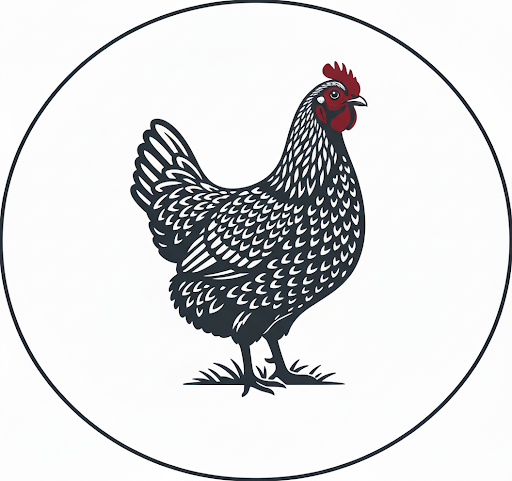What do Barnevelder chickens look like. With many more pictures than is necessary.
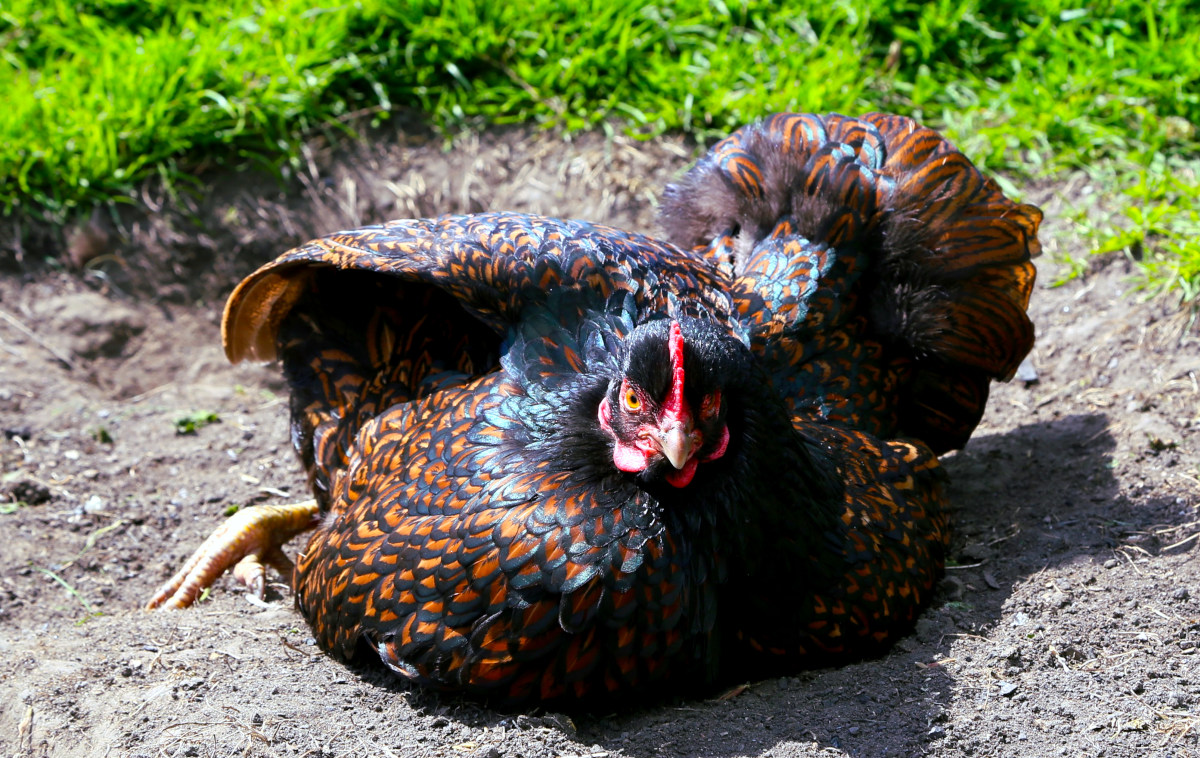
Barnevelder chickens are a striking and elegant breed known for their beautiful plumage and robust build. They typically have a medium to large size with a well-rounded body, a broad chest, and a slightly sloping back. Their feathers are glossy and tight-fitting, often displaying a stunning double-laced pattern.
Table of Contents
Other colour variations include blue-laced, silver, and partridge, all equally eye-catching. Barnevelders have a single red comb, bright red wattled earlobes, and a calm, friendly demeanour that matches their attractive appearance, making them a favourite among poultry enthusiasts.
Below: I took this picture of a blue laced Barnevelder at the national poultry show this year. She is an absolute stunner!
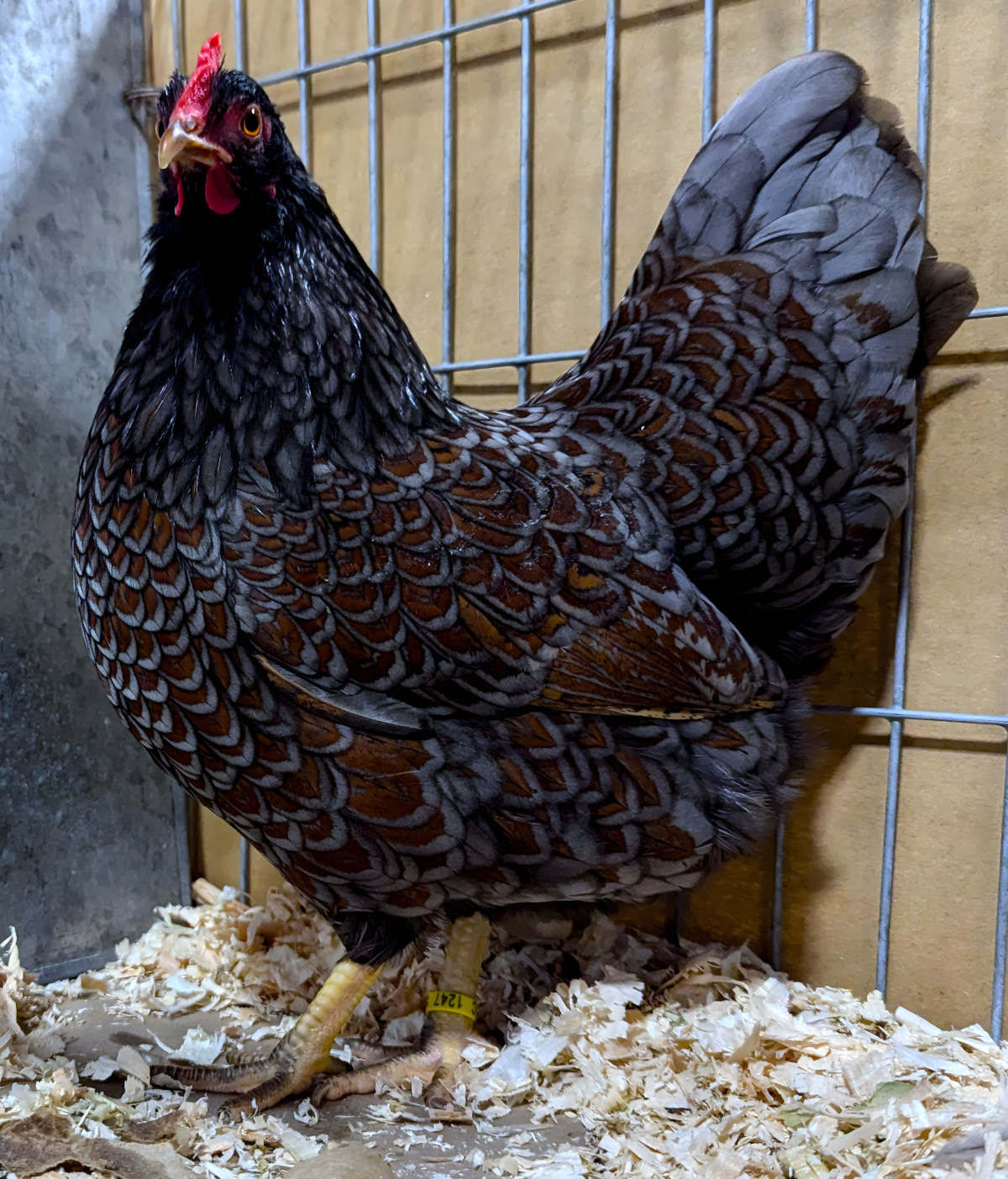
Barnevelder chickens are a large, heavy breed of chicken that originated in the Netherlands. They are known for their beautiful plumage, which is a deep reddish-brown with double black lacing. I have had mine for more than a quarter of a century now.
Barnevelders are medium-sized birds with a stout and compact body. They have a broad, full breast, a deep and round abdomen, and strong legs.
Below: 2 day old Silver laced Barnevelder chicks.
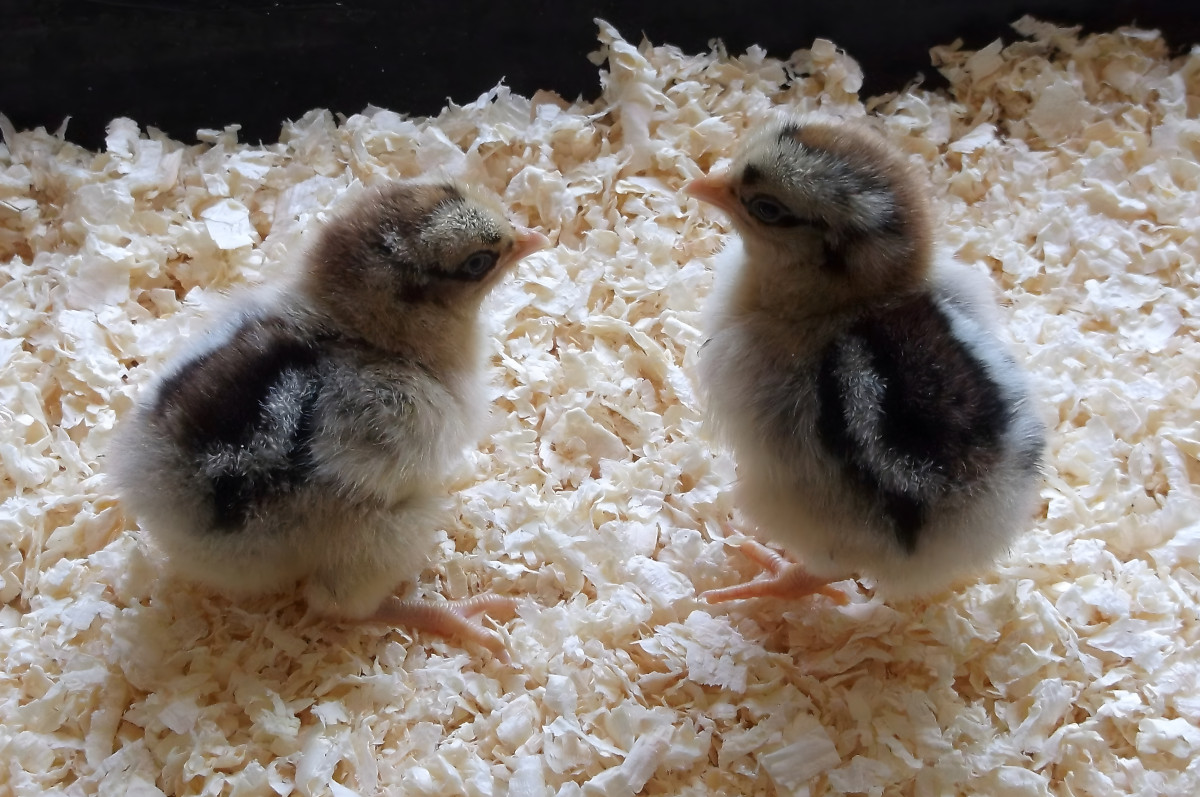
The most distinctive feature of the Barnevelder is its striking feathers. The standard variety has black feathers with double lacing of a reddish-brown colour, giving them a beautiful and unique appearance.
The Barnevelder cockerel:
The roosters have a simple, shiny black breast, while the hens have a double lacing on their chest. Both sexes have black heads with an iridescent green sheen. Barnevelders have a very elegant body shape: they are compact and rectangular with a broad and deep back.
Below: One of my breeding Barnevelder cockerels showing the beautiful beetle sheen on his feathers.
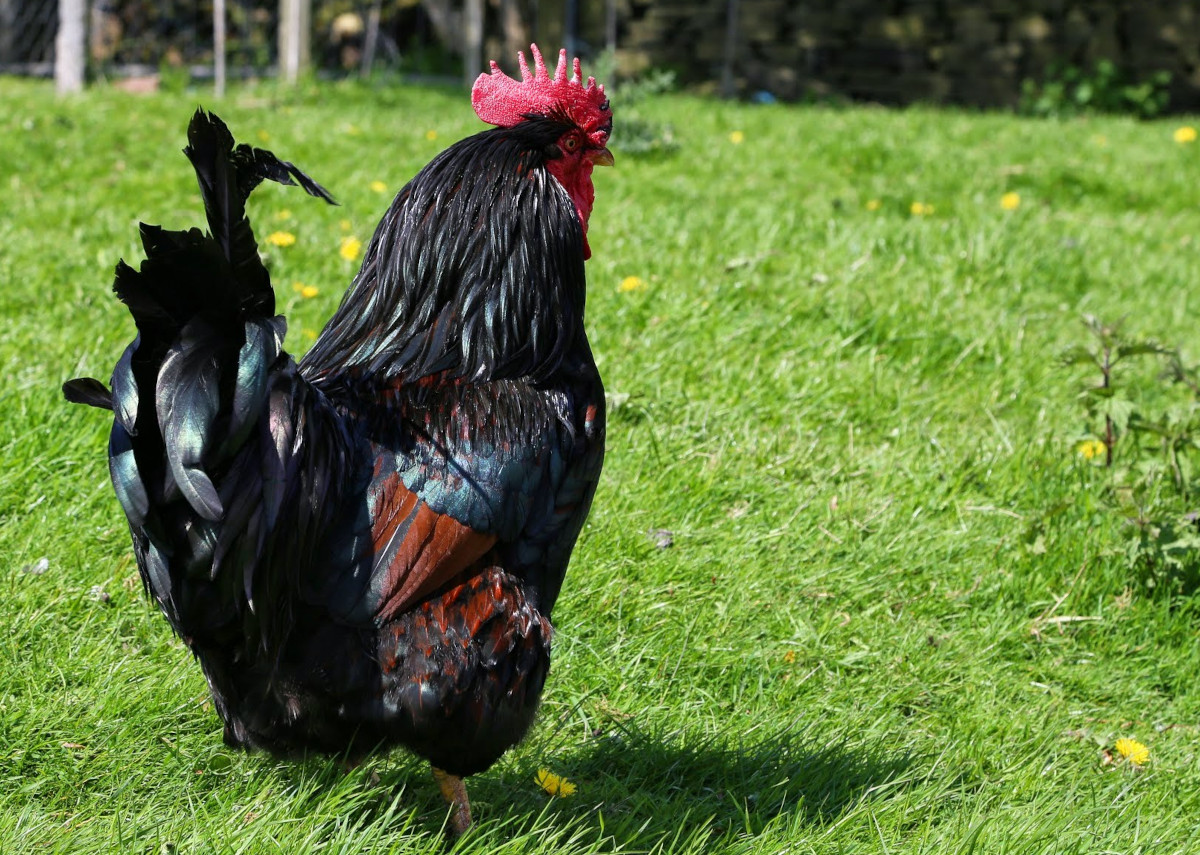
I have been keeping Barnevelder chickens for more than 25 years and have found the males to be generally good natured and trustworthy. Even during the recent bird flu housing order when we had to keep our birds inside, they were happy and relaxed about not being able to free range.
Below: A video of Barnevelder bantams.
The Barnevelder hen:
Barnevelder chickens are a gentle and friendly breed. They are good layers of large brown eggs and, unlike some other breeds, continue to lay well during winter.
Below: One of my Barny hens at a poultry show.
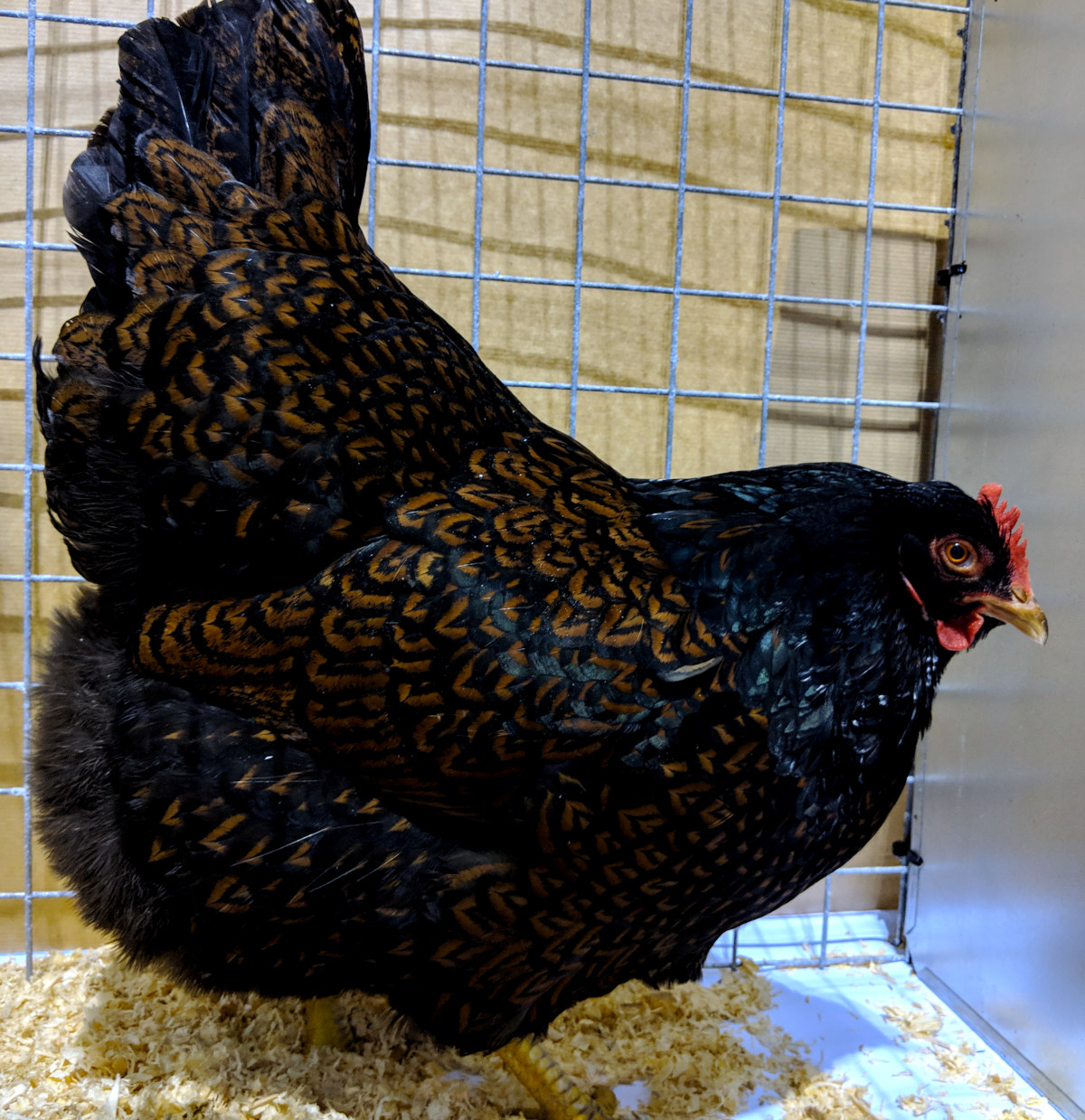
Barnevelders have a tendency to go broody, which means they may become dedicated to sitting on and hatching a clutch of eggs. This broody behaviour can be an advantage if you are interested in hatching your own chicks.
Barnevelders have a single comb, bright orange or reddish eyes, and yellow legs
Below: 2 Barnevelder hens showing their feather pattern.
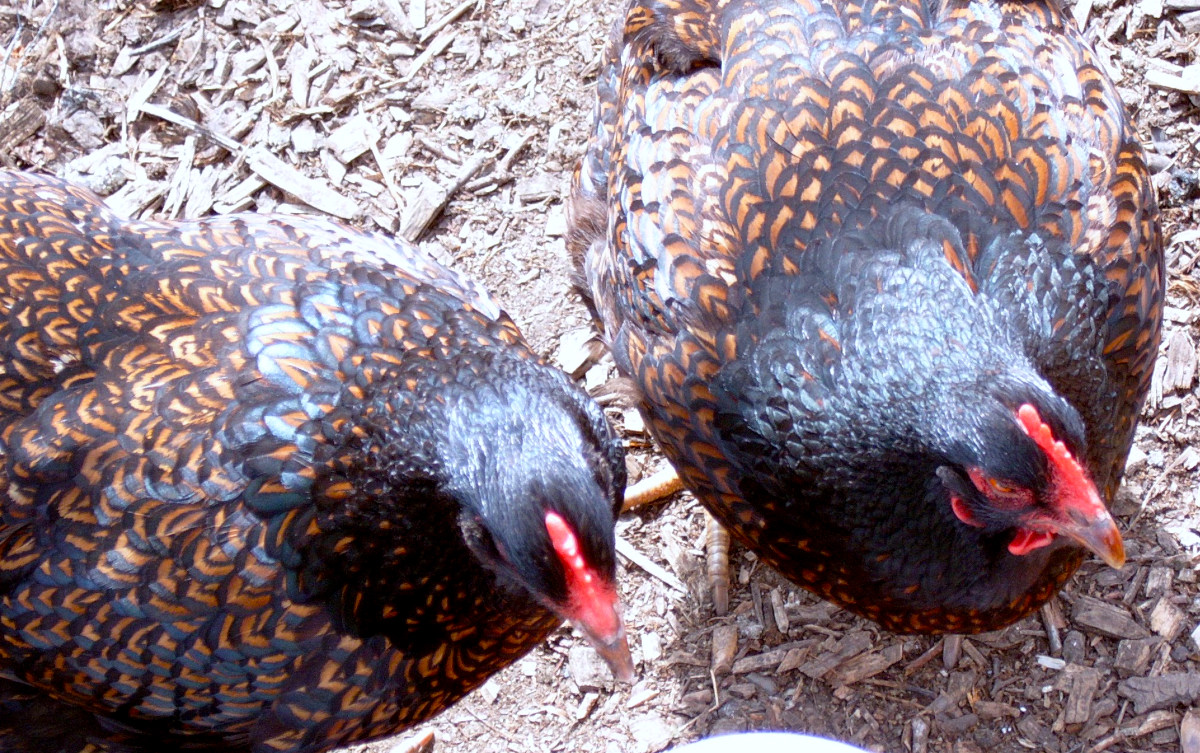
They are also good mothers and will make excellent pets for children.
Barnevelders have a natural instinct for foraging, which means they enjoy searching for their own food in the grass and soil. They are known to be good foragers and can help control pests in your garden while supplementing their diet.
Here are some additional details about the appearance of Barnevelder chickens:
- Size: Large, heavy breed
- Weight: Roosters: 3-3.5 lbs., Hens: 2.5-3 lbs.
- Plumage: Deep reddish-brown with double black lacing
- Head: Black with an iridescent green sheen
- Wings: Short, located high on the back
- Tail: Black with a beetle-green sheen
- Temperament: Gentle, friendly, good with children
- Egg colour: Dark brown
- Egg production: 180-200 large chestnut brown eggs per year
One of the main reasons people raise Barnevelder chickens is for their egg-laying capabilities. They are consistent layers of large brown eggs, known for their rich, deep brown colour. Barnevelders have the potential to lay around 180-200 eggs in their first year, making them reliable layers.
Barnevelder chicks:
Barnevelders are generally known for their calm and docile nature, making them excellent additions to a backyard flock.
Below: A clutch of sleeping Barnevelder chicks.
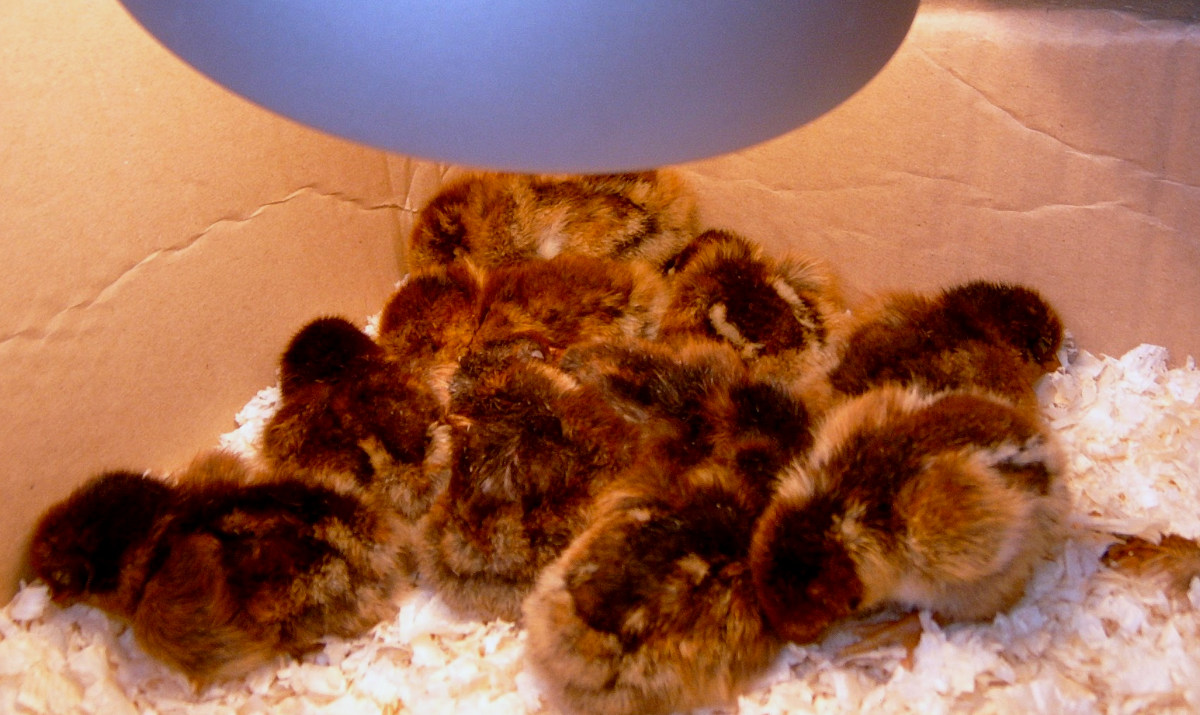
They are known to be friendly and easy to handle, which makes them popular among chicken enthusiasts, including families with children.
Below: A blue laced Barnevelder chick standing to attention for the photo shoot.
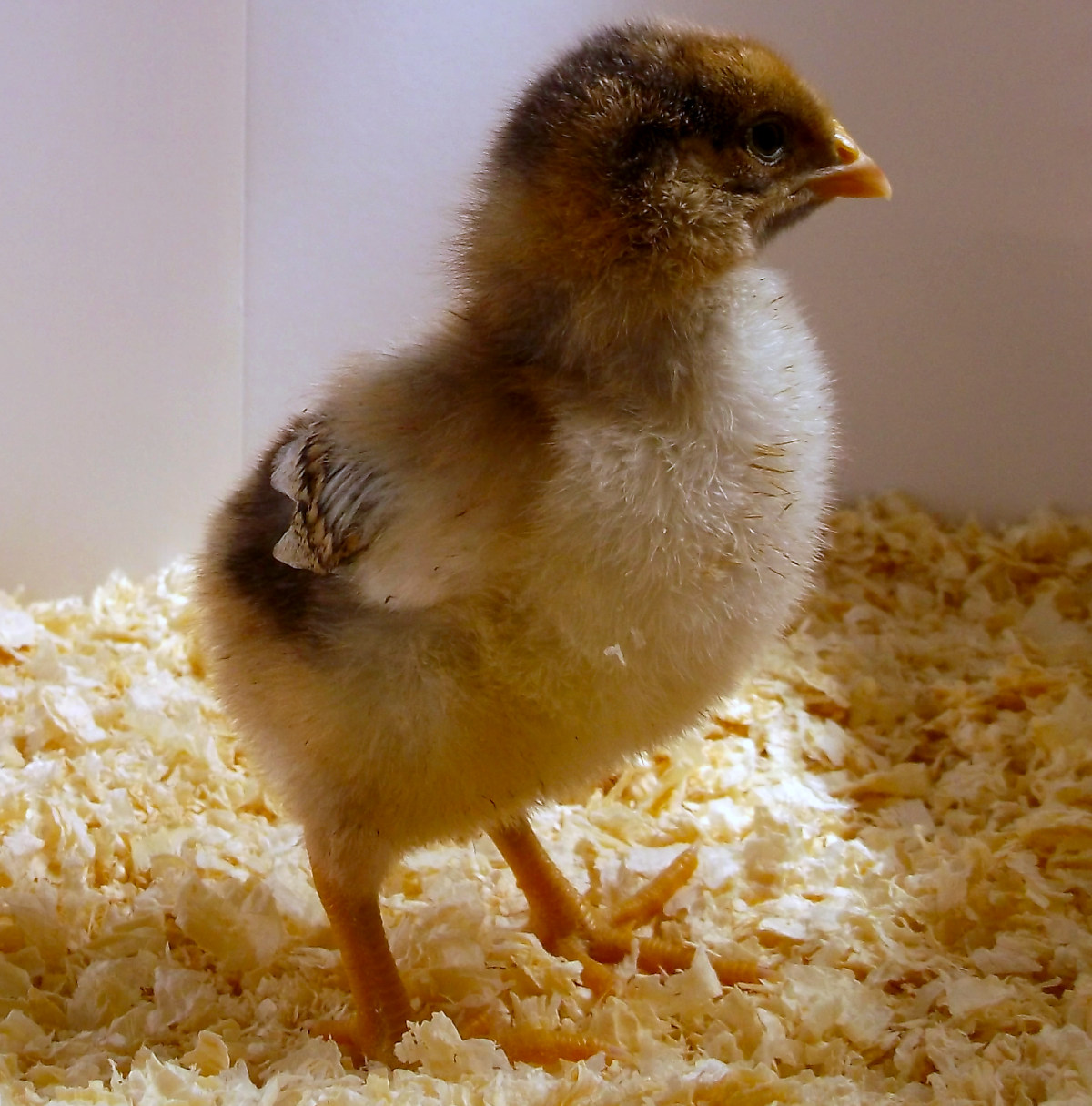
The chicks are generally hardy and easy to look after.
Barnevelder growers:
Young Barnevelders can sometimes look a little tatty and it can be very difficult to see the lacing and feather patterns till they mature properly.
Below: 2 Barnevelder growers, the top one is around 16 weeks old and the bottom one is around 12 weeks old.
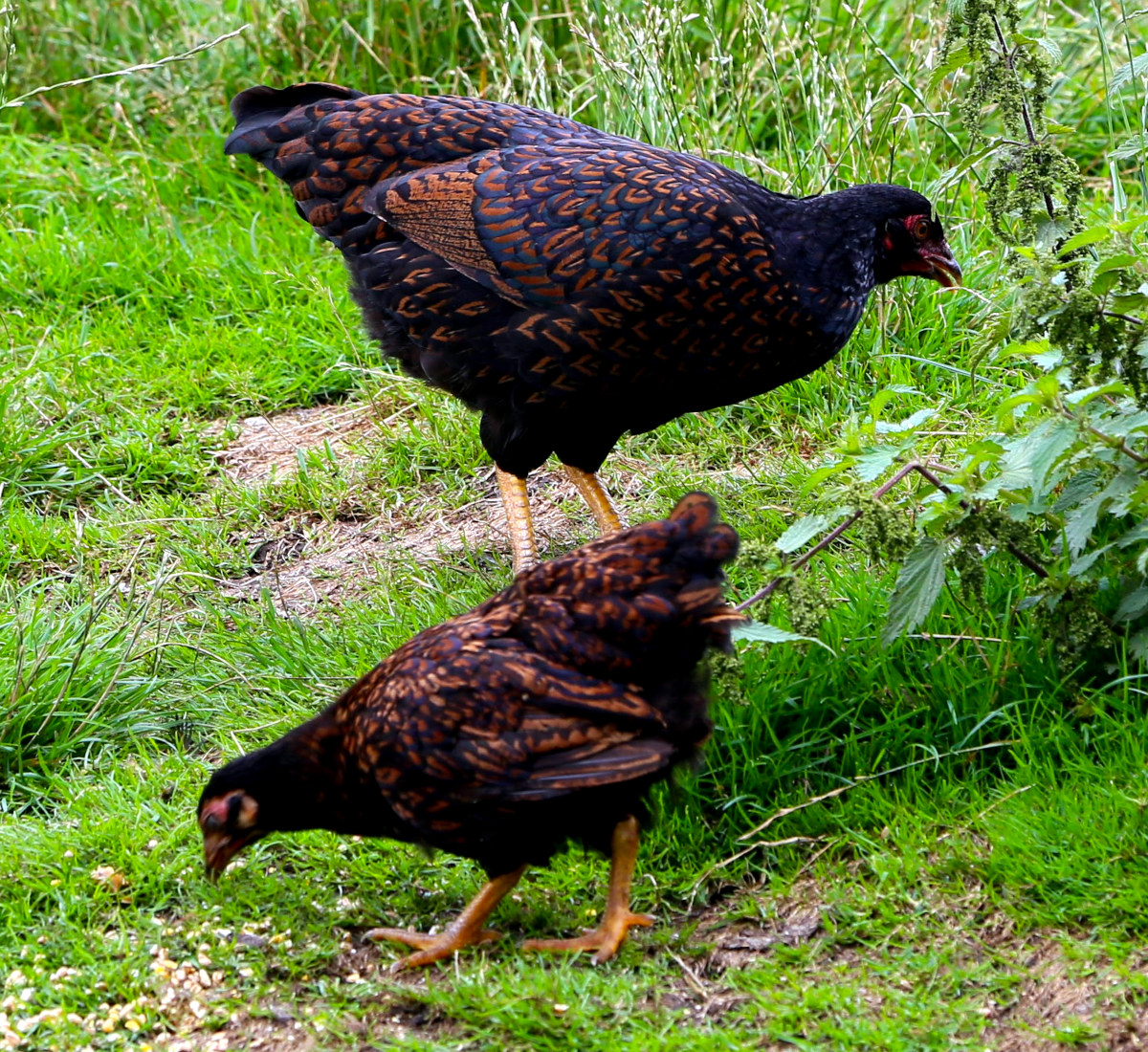
Barnevelders grow and mature slowly, it is common for them to take 30 weeks to come into lay.
